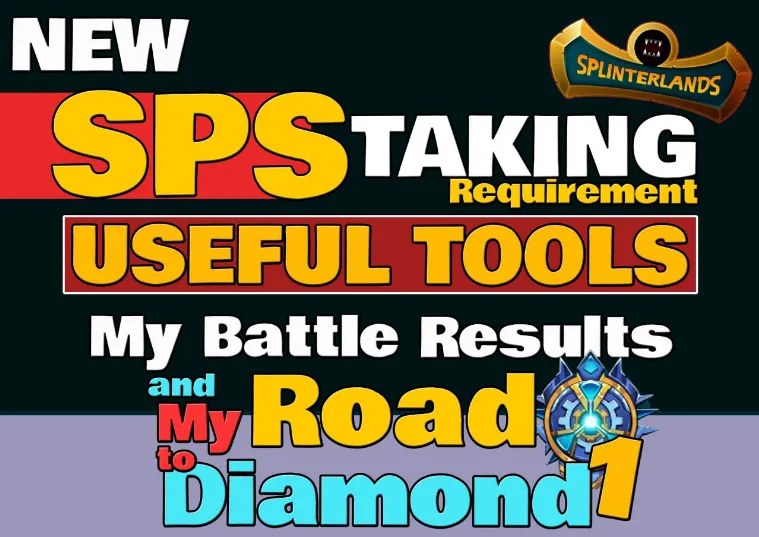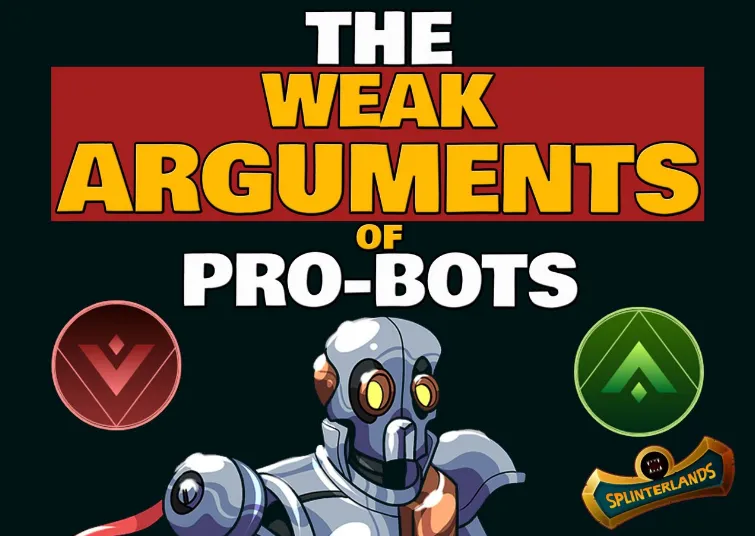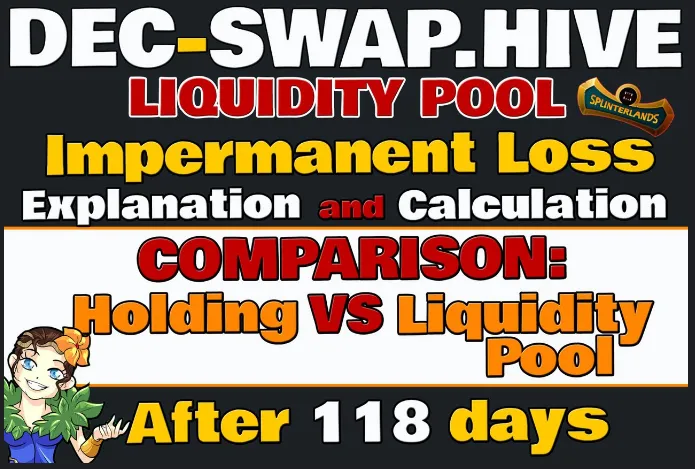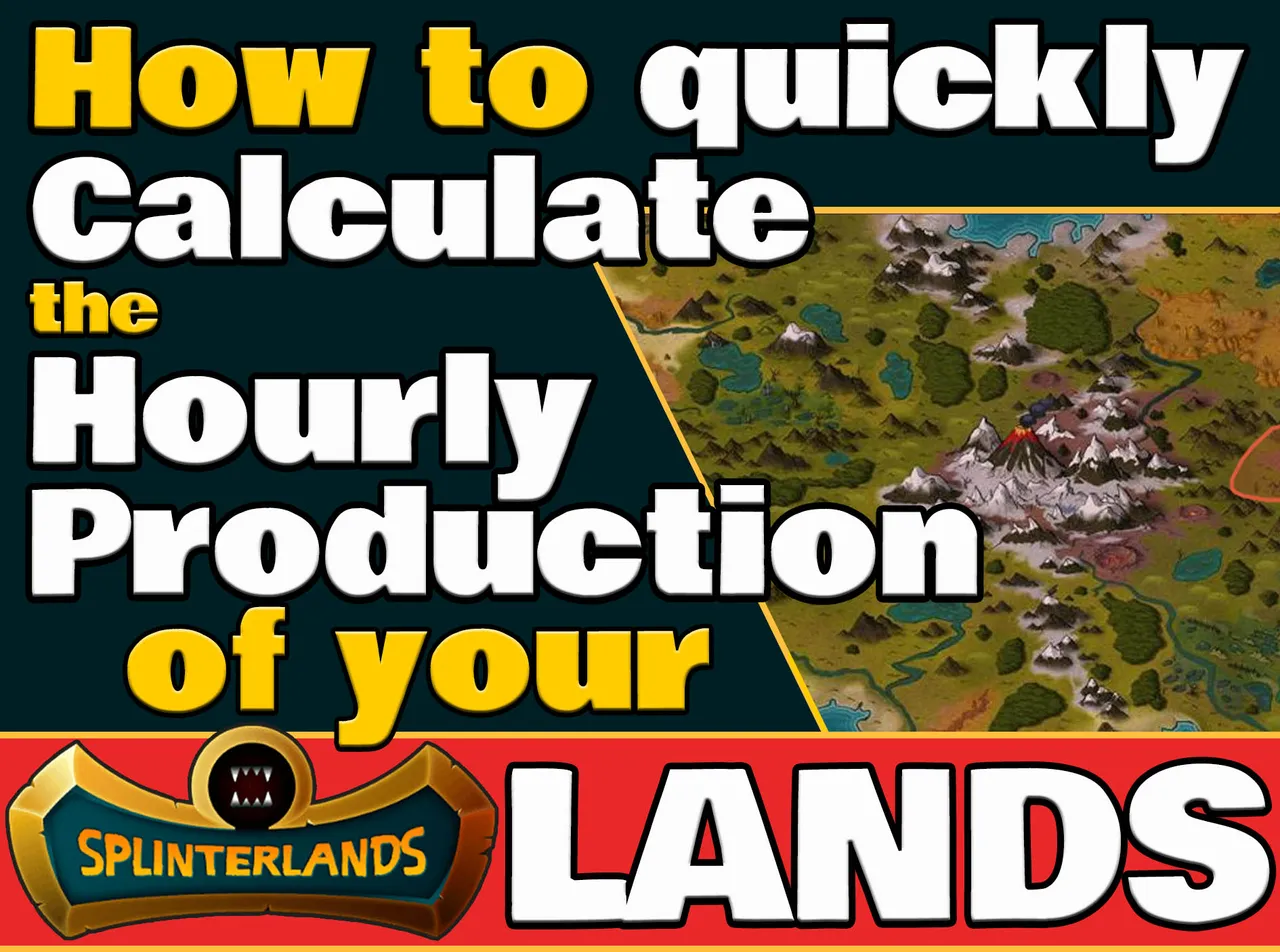
 La versione in italiano è subito dopo la versione in inglese - The Italian version is immediately after the English version
La versione in italiano è subito dopo la versione in inglese - The Italian version is immediately after the English version

How to Quickly Calculate the Hourly Production of Your Splinterlands Lands + An Example of Production Points Optimization

In my previous post, I shared some information and some of my considerations about the upcoming start of phase 1.5 od Splinterlands lands with a focus on Worker Cards, Production Points, and the lands' terrain types.
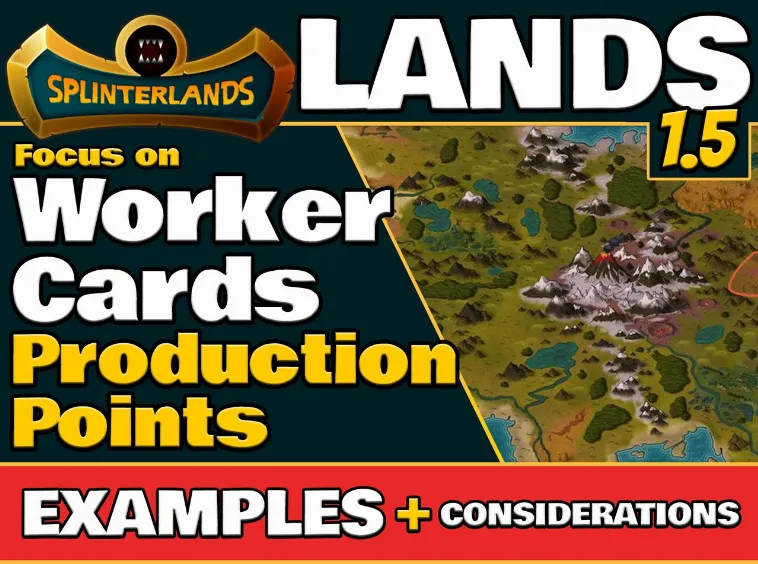 | Post Link: Splinterlands Lands Phase 1.5: Focus on Worker Cards, Production Points and Terrains - Examples + Considerations (ENG/ITA) |
|---|
In today's post I show you how to quickly calculate the resource production you will obtain when lands phase 1.5 will start based on the rarity and land type of your lands and based on the cards you have in your card collection.
When lands phase 1.5 begins each of your lands plots will have 5 slots available in which you will be able to staking a maximum of 5 cards.
Each card staked in a land plot slot will become a worker card and the unstaking will last 3 days.
Each top-level warker card will require 10K DEC to produce maximum resources.
Each card in Splinterlands has a basic Production Points attibute that varies depending on the edition of the card and depending on the rarity of the card.
I explained these details in my previous post.
Summarizing each land plot will produce an hourly amount of grain and the production will be influenced by:
- the rarity of the plot
- the land plot type
- the edition and level of the cards used as worker cards
- the amount of DEC put into staking for each worker cards.
- by the titles of the player
- by the type of the totems

Screenshot from: https://splinterlands.gitbook.io/the-secret-of-praetoria/production-points/production-points
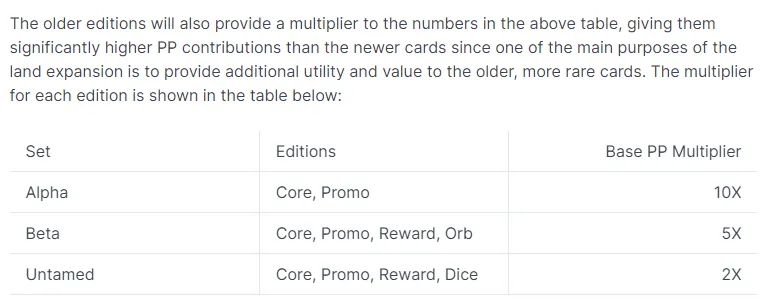
Screenshot from: https://splinterlands.gitbook.io/the-secret-of-praetoria/production-points/production-points
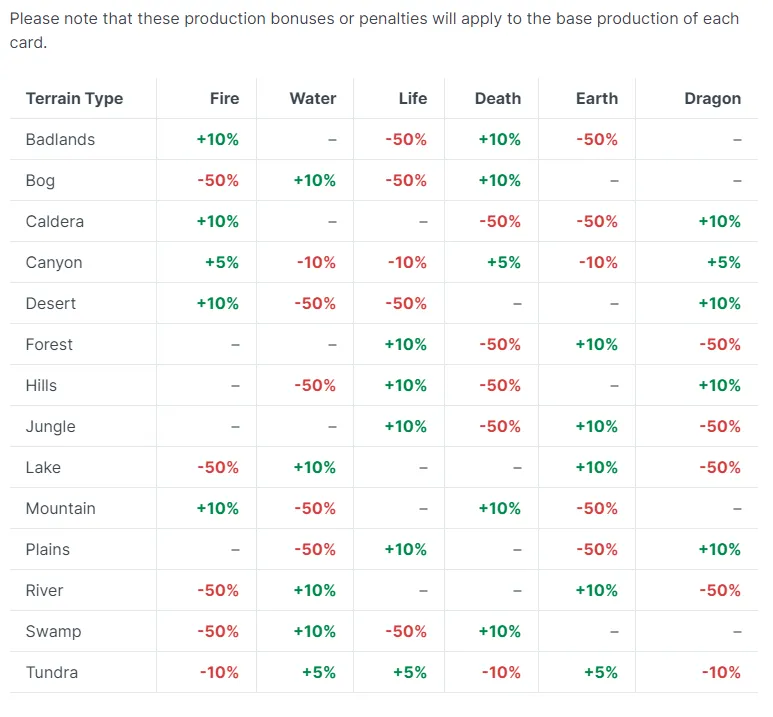
Screenshot from: https://splinterlands.gitbook.io/the-secret-of-praetoria/production-points/terrain-preferences
Today I calculated what my hourly resource production will be based on the plots I have and the cards with the highest PP I have in my card collection.
Doing this calculation today is important in my opinion because it allows you to have an initial basis of evaluation to be able to choose optimization strategies and to try to increase your hourly grain production before the production phase starts.
I have 3 land plots of common rarity in the BREDAINE region:
- 1 Forest
- 1 Hills
- 1 Plains
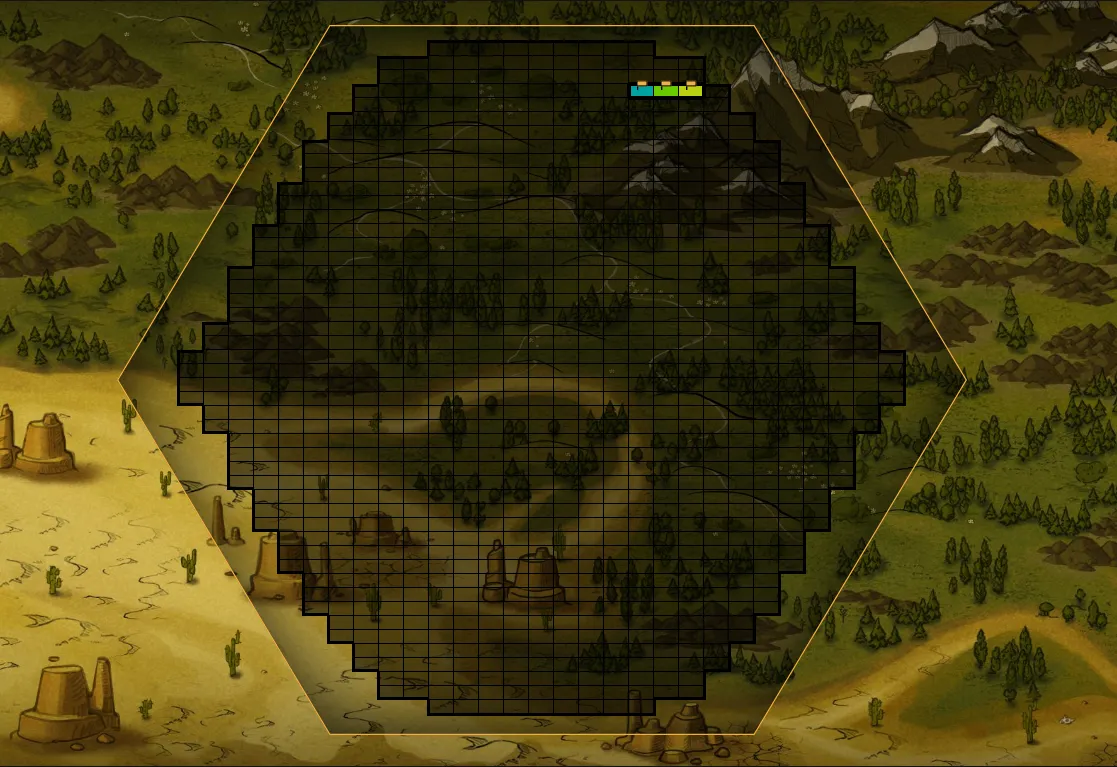
I also have 2 common totems that will grant me a production boost = +10%.

In the following three images you can see the element of cards that will grant me a production bonus or malus for each of my 3 land plots.



The first step I took today to calculate my potential total plots production was to choose my possible worker cards from:
- cards that I do not use in battle
- cards that have a high Production Point (PP) attribute.
I went to Peakmonsters in the My Cards section and selected VIEW MODE = BULK.

Then I double-clicked on PP (eighth column header of the table) to sort my cards by highest PP value (descending order)

In the following image you can see the result of my search.
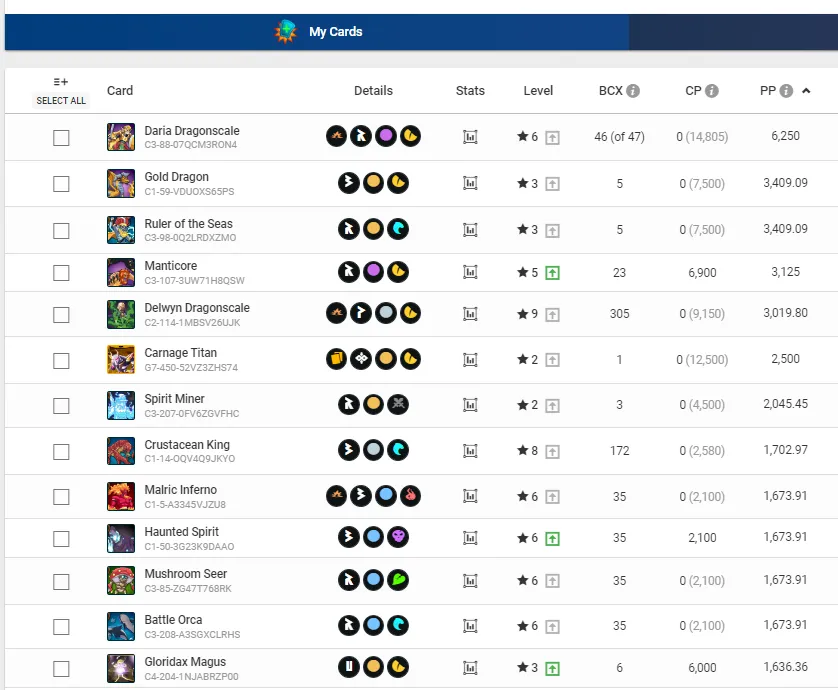
As possible choices for my land plot with the Hills I selected the cards:
- Daria Dragonscale level 6 = 6250 PP + 10% bonus
- Gold Dragon level 3 = 3409.09 PP + 10% bonus
- Manticore level 5 = 3125 PP + 10% bonus
- Delwyn Dragonscale level 9 = 3019.80 PP + 10% bonus
- Carnage Titan Gold level 2 = 2500 PP (no bonus)
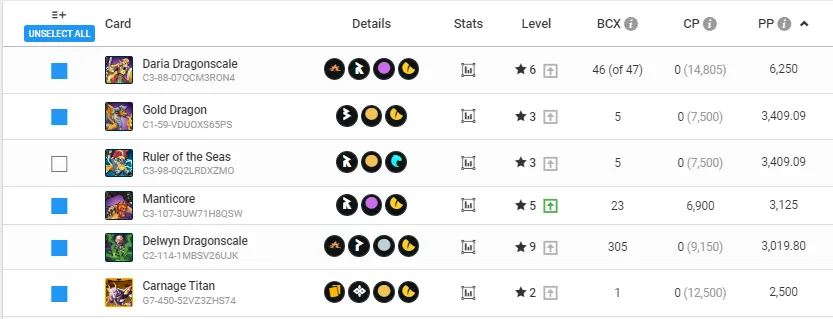
These are all cards that I consider very useful in battle but they are also cards that are only playable in the Wild Format and because I play in the Modern Format I cannot use them in battle and so they are for the moment my top 5 possible and best choices to use as worker cards when phase 1.5 of lands begins.
I did not consider Ruler Of The Seas for my Hills land plot because it would suffer a malus in production of -50% and would produce just over 1700 PP for me instead of producing 3409 PP.
To calculate the hourly grain production of the Land plot + 5 worker cards conbination I showed you earlier I used Peakmonsters' Land Calc.
I also included 1 common totem (+10%) in the calculator.
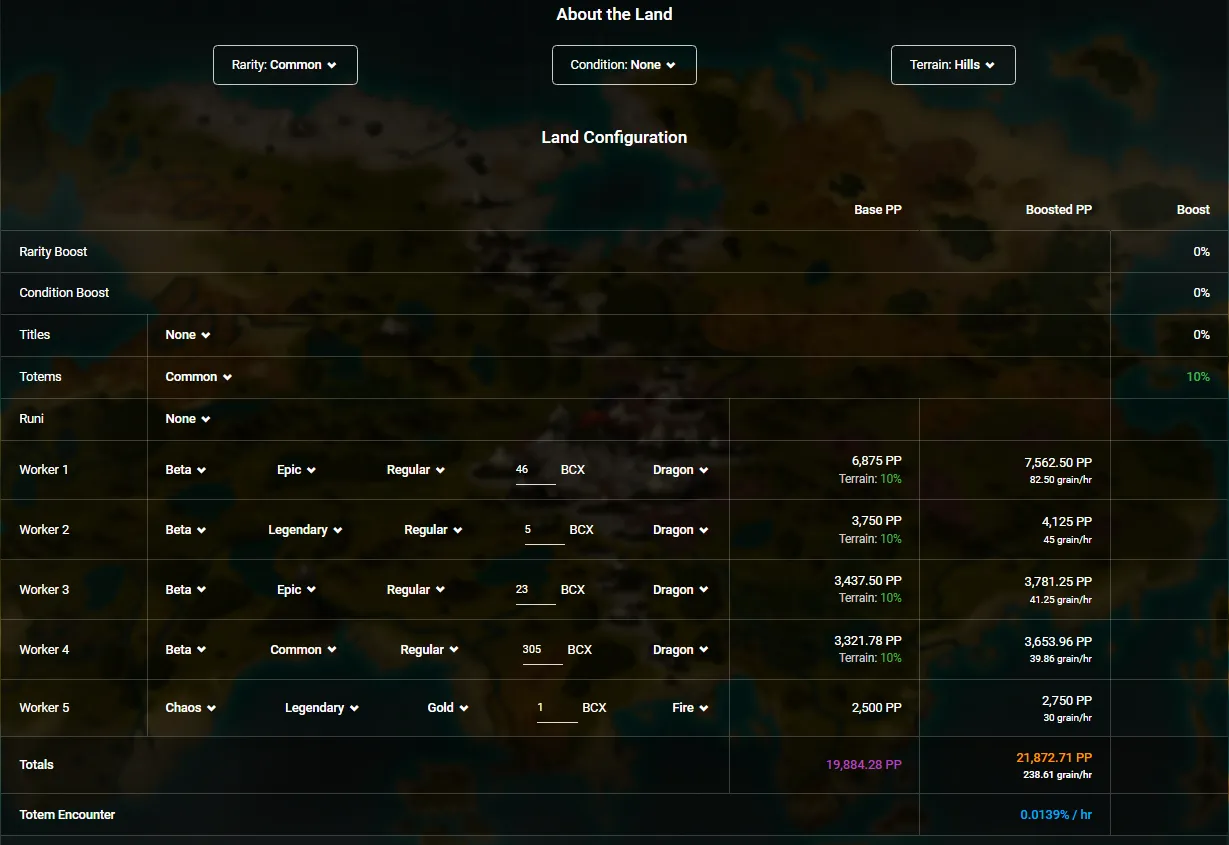
The Land calc returned me the result: Boosted PP = 21,872.71 PP = 238.61 grain/hr
I performed the same choice operations above for my other two plots Forest and Plains.
For my Forest land plot, I chose the cards you can see in the following image.
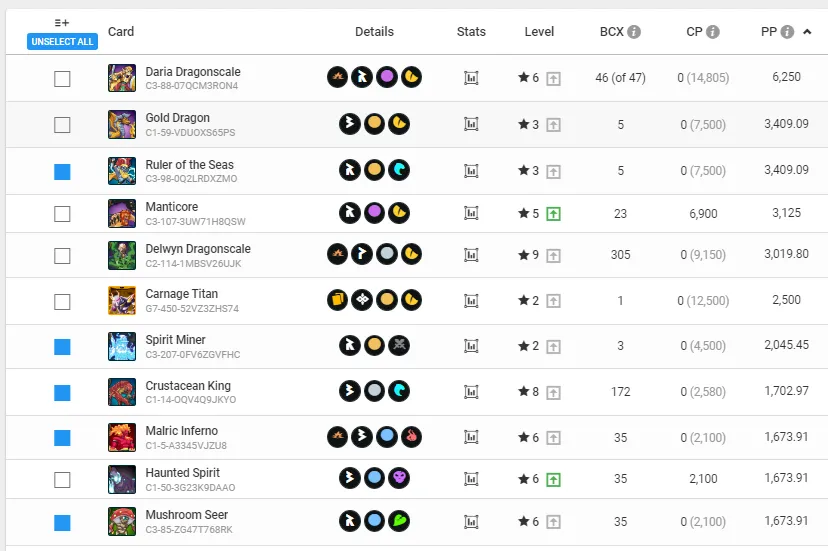
In this case the Land Calc returned me the result: Boosted PP = 11739.99 PP = 128.07 grain/hr
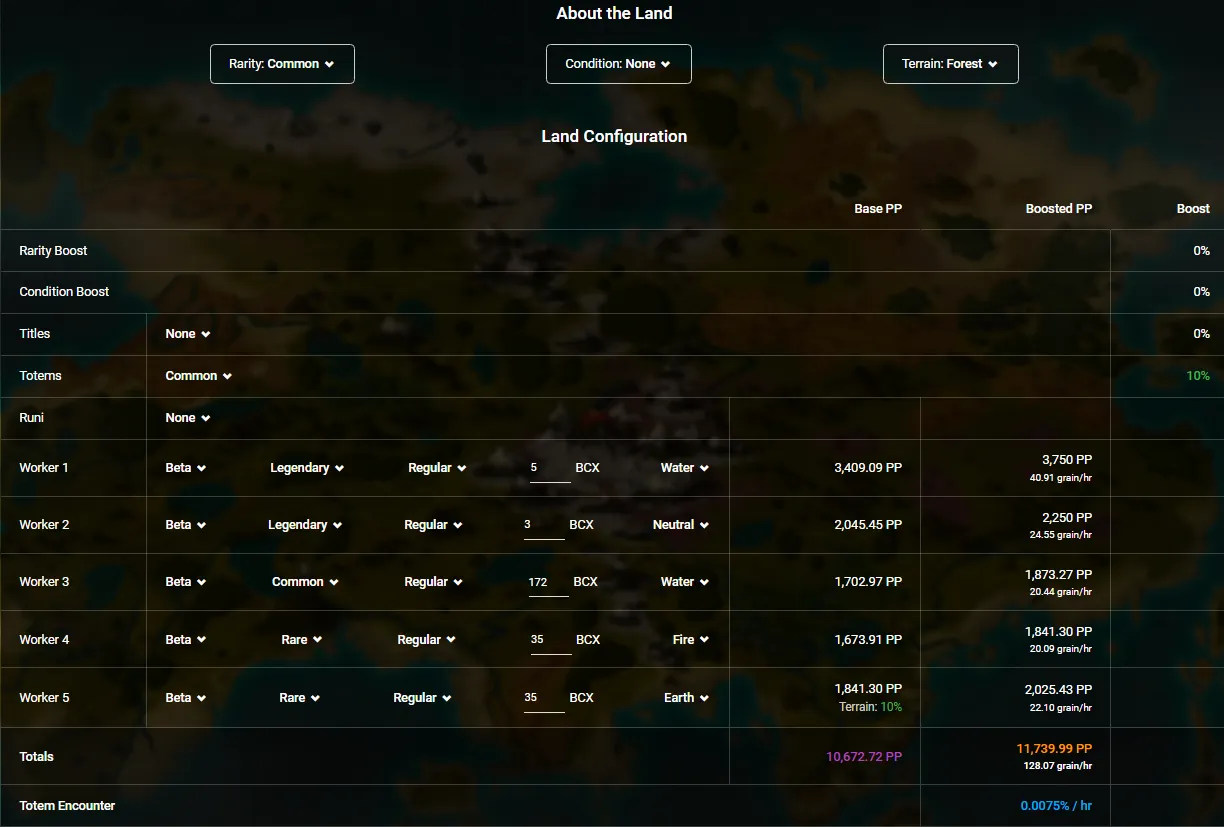
For my land plot Plains I chose the cards you can see in the following image.
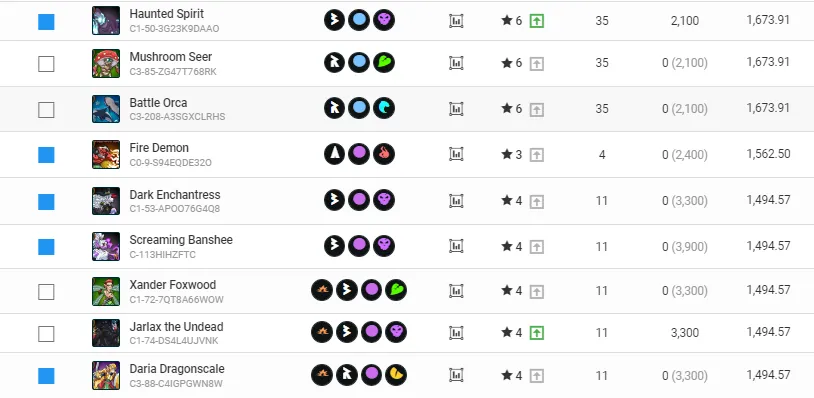
In this case the Land Calc returned me the result: Boosted PP = 7,869.58 PP PP = 78.70 grain/hr
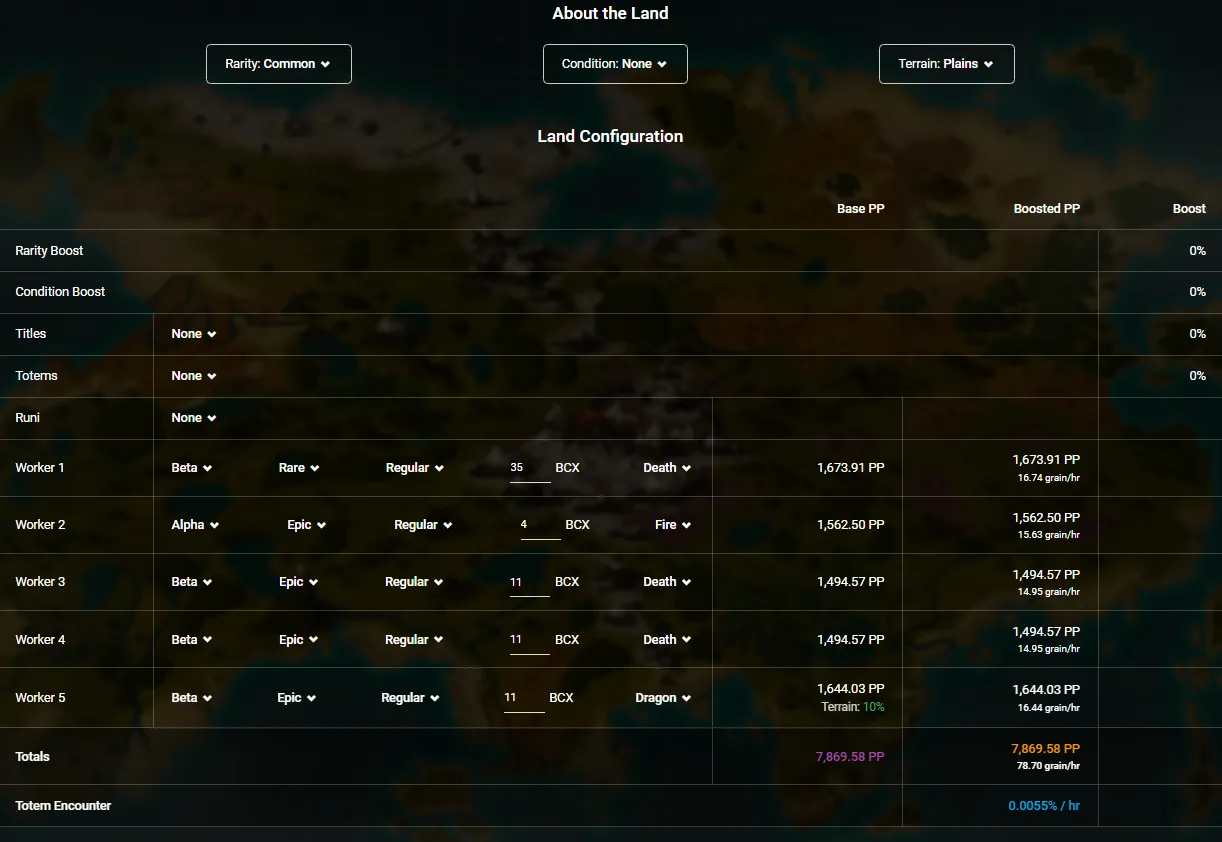
If I add up all three of the above results, I get a total hourly output = 78.70 + 128.07 + 238.61 = 445.38 grain/hr
445.38 grain/hr is the potential gain I could get when land phase 1.5 starts.
Why is it important to do this calculation and simulation today instead of waiting for phase 1.5 to begin?
Because today you can make optimizations and choices of buying and selling cards to increase your production potential calmly and quietly and because when phase 1.5 starts some cards may increase in value especially cards that have the best PP/COST RATIO ratios.
Now I will show you an example of optimization I could do to increase my future resource production.
For example in my land plot Plains I have identified as a possible worker card Screaming Banshee level 4 = 1494.57 PP
To increase Total Boosted Production I could:
- sell Undead Priest level 4 = $1,650 X 11 = $18.15
- sell Boogeyman level 5 = $0.700 X 21 = $14.70
- sell Spirit Shaman level 4 = $1,533 X 11 = $16.86
- sell Battle Orca of level 5 = $0.485 X 21 = $10.18
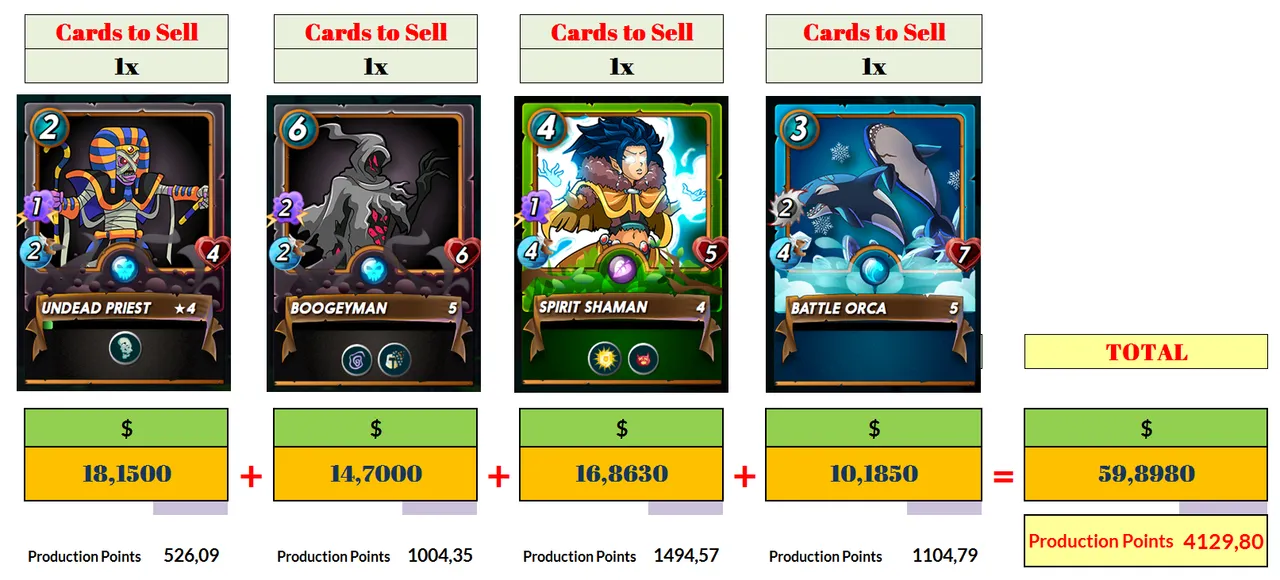
I could use the sale gain to buy Serpentine Mystic of maximum level which has a cost of $57,095.
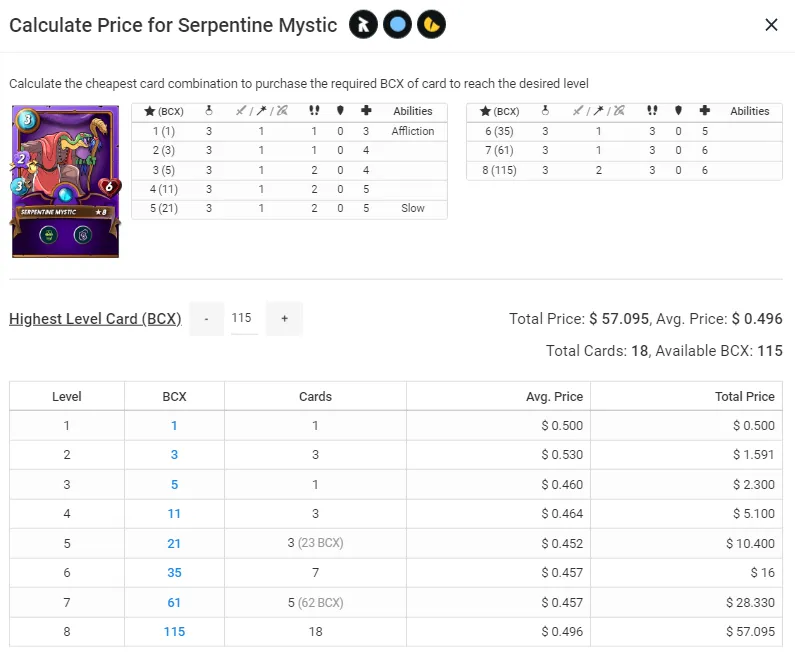
Serpentine Mystic of level 8 has an attribute PP = 5500
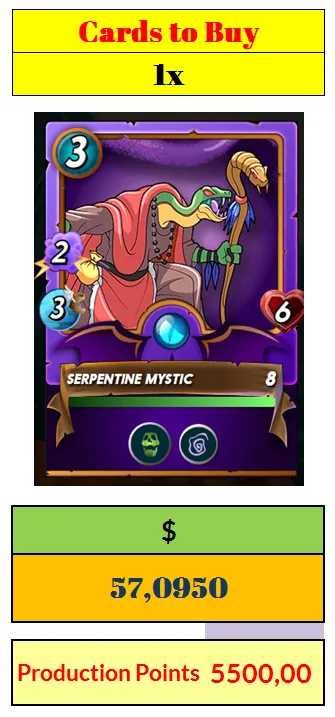
This way I can sell Beta edition cards that I cannot use in battle in Modern Format that have similar attack statistics to Serpentine Mystic.
This way instead of a 1494.57 PP card (Screaming Banshee level 4) I could use a card that has 5500 PP without spending anything and also making a small profit.
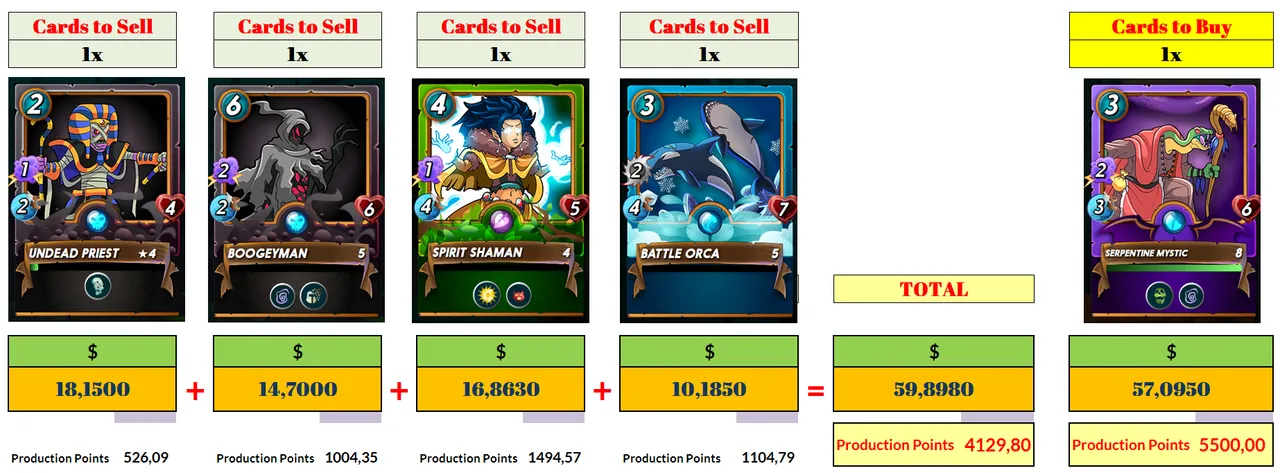
If you want to view cards for sale on the market that have the BEST PP/COST RATIO you must:
- go to the BUY section of Peakmonsters (https://peakmonsters.com/market)
- click on VIEW MODE = COMPARE
- choose Compare by Best PP/COST RATIO
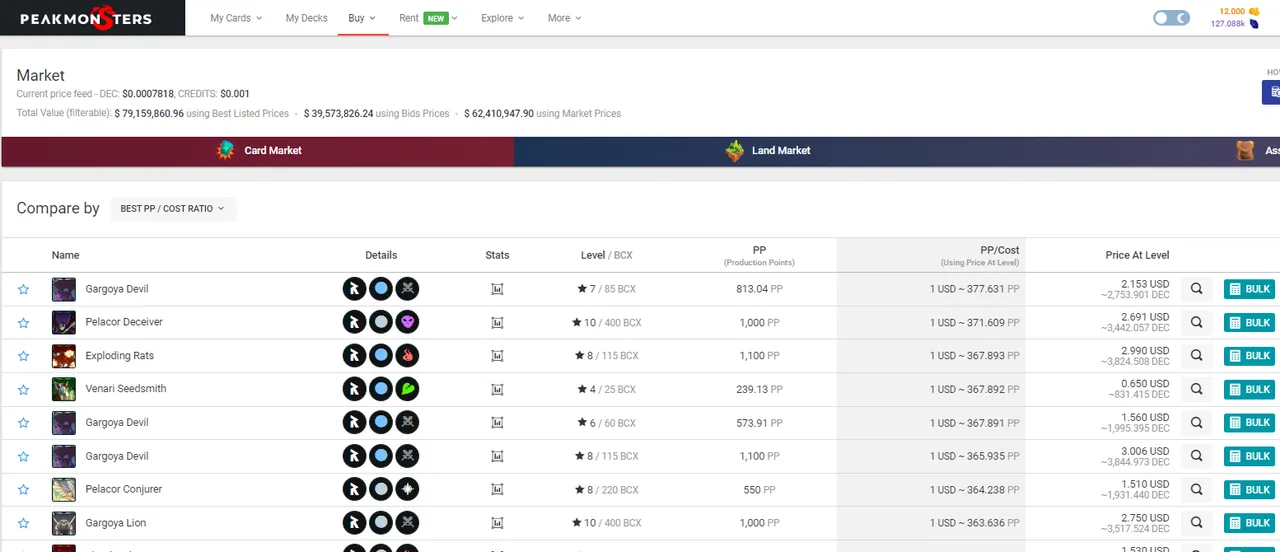
With this optimization example (Sell and Buy) I have shown practically what will be the optimization strategy I will follow until the beginning of phase 1 of lands.
I also shared my current lands strategy in my previous post and I am sharing it again in this post as well:
- I will keep my 15 cards that have the **highest total PP and that I do not use in Modern Format ranked battles.
- I will sell the cards that have a lower PP than the top 15 cards and that I do not use in battles and have a low value in the rental market.
- With the income I get from selling the cards I will buy more BCX of the cards in my top 15 for PP or buy cards that have a higher total PP.
#Splinterlands = #Hive based #Play2Earn!


Are you not a Splinterlands player?

Any game that allows the purchase of NFTs and tokens is never just a game but is also an investment and should always be considered as such.
I am not a financial advisor and if you decide to invest in the Splinterlands game you do so by your own choice, after making your personal evaluations and after considering all possible risk factors.

A selection of my previous Splinterlands posts


HIVE ON and Splinterlands ON!






Come calcolare velocemente la produzione di grano orario delle tue Splinterlands Lands + Un esempio di ottimizzazione dei Production Points



Una delle implementazioni più attese da tutti i giocatori di Splinterlands, me compreso, è il rilascio della fase 1.5 delle lands che darà il via alla produzione di risorse (grano) e aggiungerà un nuovo livello alle dinamiche di gioco presenti su Splinterlands.

Nel mio precedente post ho condiviso alcune informazioni e alcune mie considerazioni sull'inizio della fase 1.5 delle lands con un focus sulle Worker Cards, sui Production Points e sulla tipologia dei terreni delle lands.
 | Post Link: Splinterlands Lands Phase 1.5: Focus on Worker Cards, Production Points and Terrains - Examples + Considerations (ENG/ITA) |
|---|
Nel post di oggi ti mostro come calcolare velocemente la produzione di risorse che otterrai quando la fase 1.5 delle lands inizierà in base alla rarità e alla tipologia del terreno delle tue lands e in base alle carte che hai nella tua collezione di carte.
Quando inizierà la fase 1.5 delle lands ogni tuo land plots avrà 5 slots disponibili in cui potrai mettere in staking un massimo di 5 carte.
Ogni carta messa in staking in un land plot slot diventerà una worker card e l'unstaking avrà una durata di 3 giorni.
Ogni carta di Splinterlands ha un attibuto Production Points di base che varia in base all'edizione della carta e in base alla rarità della carta.
Ho approfondito questi dettagli nel mio precedente post.
Sintetizzando ogni land plot produrrà una quantità oraria di grano che sarà influenzata da:
- la rarità del plot
- la tipologia del terreno
- l'edizione e il livello delle carte utilizzate come worker cards
- la quantità di DEC messa in staking per ogni worker cards.
- dai titoli del giocatore
- dai totem

Screenshot from: https://splinterlands.gitbook.io/the-secret-of-praetoria/production-points/production-points

Screenshot from: https://splinterlands.gitbook.io/the-secret-of-praetoria/production-points/production-points

Screenshot from: https://splinterlands.gitbook.io/the-secret-of-praetoria/production-points/terrain-preferences
Oggi ho calcolato quale sarà la mia produzione di risorse oraria in base ai plots che ho e alle carte con il PP più alto che ho nella mia collezione di carte.
Fare questo calcolo oggi è secondo me imporante perchè permette di avere una iniziale base di valutazione per poter scegliere strategie di ottimizzazione e per cercare di aumentare la produzione oraria di grano prima che la fase di produzione inizi.
Io ho 3 land plot di rarità comune nella regione BREDAINE:
- 1 Forest
- 1 Hills
- 1 Plains

Ho anche 2 totem comuni che mi garantiranno un boost di produzione = +10%.

Nelle tre immagini seguenti puoi vedere l'elemento delle carte che mi garantiranno un bonus o un malus di produzione per ognuno dei miei 3 land plots.



Il primo passo che ho effettuato oggi per calcolare la mia potenziale produzione totale dei miei plots è stato quello di scegliere le mie possibili worker cards tra:
- le carte che non utilizzo in battaglia
- le carte che hanno un attributo Production Point (PP) alto
Sono andato su Peakmonsters nella sezione My Cards e ho selezionato VIEW MODE = BULK.

Poi ho cliccato due volte su PP (intestazione dell'ottava colonna della tabella) per ordinare le mie carte in base al valore PP più alto (ordine decrescente)

Nell'immagine seguente puoi vedere il risultato della mia ricerca.

Come possibili scelte per il mio land plot con il terreno Hills ho scelto le carte:
- Daria Dragonscale level 6 = 6250 PP + 10% bonus
- Gold Dragon level 3 = 3409.09 PP + 10% bonus
- Manticore level 5 = 3125 PP + 10% bonus
- Delwyn Dragonscale level 9 = 3019.80 PP + 10% bonus
- Carnage Titan Gold level 2 = 2500 PP (no bonus)

Sono tutte carte che considero molto utili in battaglia ma sono anche carte che sono giocabili solo nel Wild Format e dato che io gioco nel Modern Format non posso utilizzarle in battaglia e quindi sono per il momento le mie 5 possibili e migliori scelte da utilizzare come worker cards quando la fase 1.5 delle lands inizierà.
Non ho considerato Ruler Of The Seas per il mio land plot Hills perchè subirebbe un malus di produzione del -50% e mi produrrebbe poco più di 1700 PP invece di produrre 3409 PP.
Per calcolare la produzione di grano orario della conbinazione Land plot + 5 worker cards che ti ho mostrato prima ho utilizzato il Land Calc di Peakmonsters.
Nel calcolatore ho inserito anche 1 totem comune (+10%).

Il Land calc mi ha restituito il risultato: Boosted PP = 21,872.71 PP = 238.61 grain/hr
Ho effettuato le stesse operazioni di scelta precedenti per gli altri due miei plots Forest e Plains.
Per il mio land plot Forest ho scelto le carte che puoi vedere nell'immagine seguente.

In questo caso il Land Calc mi ha restituito il risultato: Boosted PP = 11739.99 PP = 128.07 grain/hr

Per il mio land plot Plains ho scelto le carte che puoi vedere nell'immagine seguente.

In questo caso il Land Calc mi ha restituito il risultato: Boosted PP = 7,869.58 PP PP = 78.70 grain/hr

Se sommo tutti e tre i risultati precedenti ottengo una produzione oraria totale = 78.70 + 128.07 + 238.61 = 445.38 grain/hr
445.38 grain/hr è il potenziale guadagno che potrei ottenere quando la fase 1.5 delle land inizierà.
Perchè è importante fare questo calcolo e questa simulazione oggi invece di aspettare l'inizio della fase 1.5?
Perchè oggi è possibile fare ottimizzazioni e scelte di acquisto e vendita di carte per aumentare il proprio potenziale di produzione con calma e tranquillità e perchè quando la fase 1.5 inizierà alcune carte potrebbero aumentare di valore soprattutto le carte che hanno i migliori rapporti PP/COST RATIO.
Adesso ti mostro un esempio di ottimizzazione che potrei fare per aumentare la mia futura produzione di risorse.
Ad esempio nel mio land plot Plains ho individuato come possibile worker card Screaming Banshee livello 4 = 1494.57 PP
Per aumentare il Total Boosted Production potrei:
- vendere Undead Priest level 4 = 1.650 $ X 11 = 18.15 $
- vendere Boogeyman di livello 5 = 0.700 $ X 21 = 14.70 $
- vendere Spirit Shaman di livello 4 = 1.533 $ X 11 = 16.86 $
- vendere Battle Orca di livello 5 = 0.485 $ X 21 = 10.18 $

Potrei utilizzare il guadagno di vendita per acquistare Serpentine Mystic di livello massimo che ha un costo di 57.095$.

Serpentine Mystic di livello 8 ha un attributo PP = 5500

In questo modo posso vendere carte dell'edizione Beta che non posso utilizzare in battaglia nel Modern Format e che hanno statistiche di attacco simili a Serpentine Mystic.
In questo modo al posto di una carta da 1494.57 PP (Screaming Banshee livello 4) potrei utilizzare come worker cards una carta che ha 5500 PP senza spendere nulla e ottenendo anche un piccolo profitto.

Se vuoi visualizzare le carte in vendita sul mercato che hanno il Best PP/COST RATIO devi:
- andare nella sezione BUY di Peakmonsters (https://peakmonsters.com/market)
- cliccare su VIEW MODE = COMPARE
- scegliere Compare by Best PP/COST RATIO

Con questo esempio di ottimizzazione (Sell and Buy) ho mostrato praticamente quale sarà la strategia di ottimizzazione che seguirò fino all'inizio della fase 1 delle lands.
Ho condiviso la mia strategia attuale per le lands anche nel mio precedente post e la ricondivido anche in questo post:
- Manterrò le mie 15 carte che hanno il PP totale più alto e che non utilizzo nelle ranked battles del Modern Format.
- Venderò le carte che hanno un PP più basso delle top 15 carte e che non utilizzo in battaglia e che hanno un valore nel mercato del noleggio basso.
- Con il ricavato che otterrò dalla vendita delle carte acquisterò altri BCX delle carte nella mia top 15 oppure acquisterò carte che hanno un PP totale più alto.
Spero di averti dato informazioni utili e ti ringrazio per aver dedicato il tuo tempo alla lettura di questo post :)
#Splinterlands = #Hive Based #Play2Earn!

Non sei un giocatore di Splinterlands?

Ogni gioco che permette l'acquisto di NFT e di token non è mai un semplice gioco ma è anche un investimento e come tale deve sempre essere considerato.
Io non sono un consulente finanziario e se decidi di investire nel gioco di Splinterlands lo fai per tua scelta, dopo aver fatto le tue personali valutazioni e dopo aver considerato tutti i possibili fattori di rischio.

Una selezione dei miei post su Splinterlands







